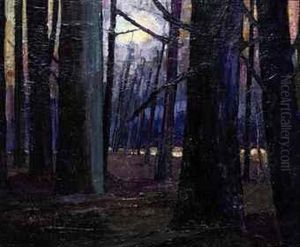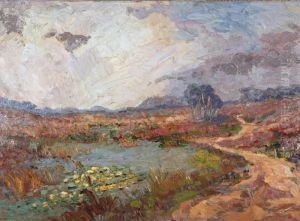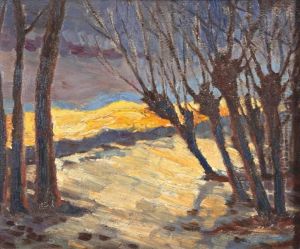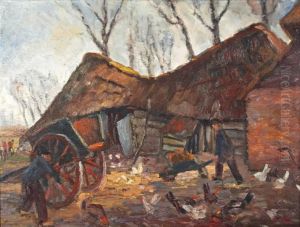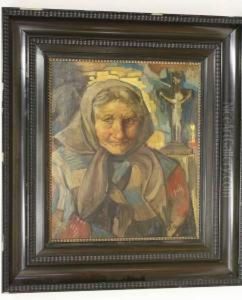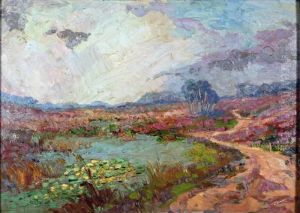Jan Kruijsen Paintings
Jan Kruijsen was a Dutch painter, born on March 27, 1874, in Tilburg, Netherlands. He was known for his expressive and colorful paintings which often depicted rural life, landscapes, and religious themes. Kruijsen's work is characterized by a robust and vigorous style, utilizing a rich palette and dynamic brushwork that captured the essence of his subjects with both realism and emotional depth.
Kruijsen's early life was steeped in the artistic tradition, with his father being an art dealer and decorator, which undoubtedly influenced his path. He began his formal art education at the Design Academy in Eindhoven and later continued his studies at the Royal School of Art and Design in 's-Hertogenbosch. His education provided him with a strong foundation in the techniques and principles of art, which he would both adhere to and challenge in his later work.
Throughout his career, Jan Kruijsen remained deeply connected to his Dutch roots, and this connection was vividly reflected in his artwork. He often traveled throughout the countryside, drawing inspiration from the landscapes and the people he encountered. Kruijsen's paintings of rural life are particularly notable for their vivid portrayal of the peasantry, capturing the hardships and simple beauties of their everyday lives.
Kruijsen's religious works were also important, as they reveal his personal faith and contemplation of the divine. His religious paintings often depicted biblical scenes or saints, rendered with a passionate intensity that was meant to evoke spiritual reflection and emotion in the viewer.
Despite his talent and the quality of his work, Jan Kruijsen did not gain the same level of recognition during his lifetime as some of his contemporaries. Nevertheless, he continued to paint until his death, leaving behind a body of work that is appreciated for its authentic portrayal of Dutch culture and its emotive strength.
Jan Kruijsen passed away on November 29, 1938, in Hilversum, Netherlands. His legacy is preserved in the collections of various Dutch museums and in the hearts of art enthusiasts who celebrate his contribution to the portrayal of rural life and the evocative expression of religious sentiment in art.
